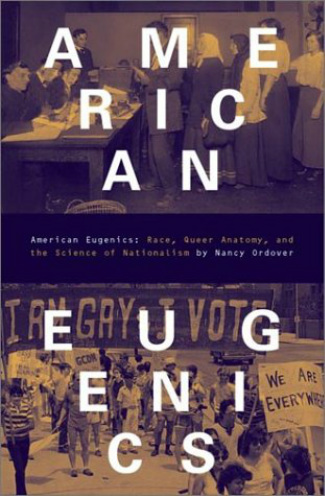 Eugenic thinking is woven into the fabric of American society Eugenic thinking is woven into the fabric of American society Tags: biology, bodies, class, crime/law/deviance, demography/population, disability, discourse/language, gender, health/medicine, immigration/citizenship, intersectionality, lgbtq, nationalism, prejudice/discrimination, race/ethnicity, science/technology, sex/sexuality, institutionalized discrimination, eugenics, subtitles/CC, 11 to 20 mins, 21 to 60 mins Year: 2012; 2013 Length: 15:05; 17:25 Access: YouTube (clip 1; clip 2) Summary: The eugenics movement has a long history in the United States. A popular misconception is that eugenic thinking and the associated practices were uniformly abandoned after the Third Reich's genocidal intentions were laid bare at the end of the Second World War. In point of fact, eugenic ideologies and practices have been recalcitrant features of American social institutions right up until the present day. In her book American Eugenics: Race, Queer Anatomy, and the Science of Nationalism, Nancy Ordover remarks on the resiliency of the ideology, "Eugenics..is a scavenger ideology, exploiting and reinforcing anxieties over race, gender, sexuality, and class and bringing them into the service of nationalism, white supremacy, and heterosexism." In earlier decades eugenicists could openly discuss stemming the "overflow" of immigration, as an effort to "dry up...the streams that feed the torrent of defective and degenerate protoplasm." The language of eugenics would eventually change, but the core ideas have remained; socially deviant groups and socially undesirable conditions are seen by eugenicists as biologically determined. The above clips are news stories, which draw attention to two recent manifestations of eugenics policy. The first clip chronicles the experience of an African American woman who was legally sterilized in the late 1960s in North Carolina after giving birth to her first son. The clip reports that between 1929 and 1974 approximately 7,600 North Carolinians were sterilized for a host of dubious reasons, from "feeble-mindedness" to "promiscuity." But while North Carolina's victims included men, women, and children, Ordover's research points out that the victims were overwhelmingly women and African American (by 1964 African Americans composed 65% of all women sterilized in the state). The first clip, then, is an example of how eugenics became institutionalized with the force of law, but the second news clip examines a case of institutionalized eugenics in California, which existed without the explicit consent of law. In 1909 California became the third state to pass a compulsory sterilization law, allowing prisons and other institutions to sterilize "moral degenerates" and "sexual perverts showing hereditary degeneracy." By 1979, when the law was finally repealed, the state had already sterilized as many as 20,000 people, or about one-third of the total number of such victims throughout the United States. One learns from the news clip that between 2006 and 2010, 148 women were sterilized by doctors who continued to be guided by the precepts of their eugenic ideology. Submitted By: Lester Andrist
5 Comments
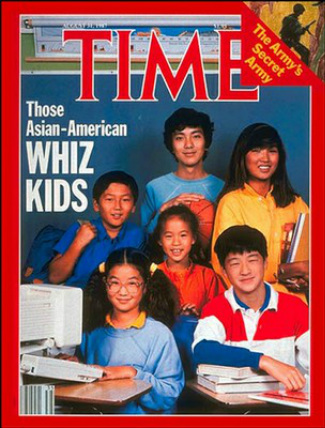 The model minority stereotype hurts Asian-Americans. The model minority stereotype hurts Asian-Americans. Tags: biology, culture, education, immigration/citizenship, race/ethnicity, asian-americans, model minority, stereotype, 00 to 05 mins Year: 2007 Length: 5:40 Access: YouTube Summary: Because Asian-Americans are often better off educationally and economically than whites and other minorities, many people believe in the racial stereotype that Asian-Americans are the model minority. This stereotype argues that Asians are naturally smarter or always fare better because of their strong “family values” and work ethic, with some arguing they are a “superminority” and have been “outwhiting the whites.” This CNN news clips analyzes and critiques the model minority stereotype. The video accurately notes there are no biological or genetic differences between Asians and any other so-called race (see video on race as a social construction). It cites psychological research from Hazel Markus (featured in the video) documenting how racial/cultural identity does shape some Asian-Americans' educational performance. The video further adds that the Asian-American classification is comprised of individuals from more than 12 countries, and that not all Asian immigrants or Asian-Americans performed equally well in education or economic success (a distinction that the stereotype ignores). However, the video fails to note the recent changes in Asian immigration that also affect educational and economic differences between Asians, whites, and other racial minorities. Specifically, many early Asian immigrants came to the US with relatively higher levels of education, English language skills, and occupational skills. More recent Asian immigrants tend to have less educational and economic resources, which again, is overlooked by the racial stereotype. Viewers are encouraged to consider: how does this seemingly positive racial stereotype actually hurt Asians (and other minorities)? As noted in this video interview with an Asian-American advocate, the stereotype prevents resources from being directed into the Asian-American community because "people are not aware of the critical needs" that exist. It also hurts other racial minorities (e.g., African-Americans) because the stereotype gets used to legitimate the opportunities of racial minorities in the US and to argue against the need for resources distributed to those communities. Submitted By: Paul Dean 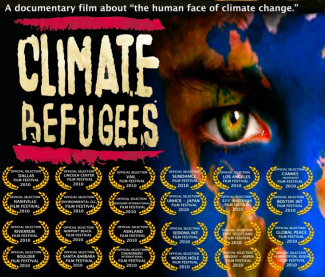 This trailer and film examine the human face of climate change. This trailer and film examine the human face of climate change. Tags: environment, globalization, immigrants/citizenship, climate change, climate justice, migration, refugees, 00 to 05 mins, 61+ mins Year: 2010 Length: 3:03 Access: YouTube Summary: While the science behind climate science clearly shows that climate change is caused by humans (see summary of the 2013 IPCC report), its actual effects on humans is often harder for people to understand. One of the many effects of climate change, however, is the emergence of climate refugees. As defined by the creators of this film by the same name, "a climate refugee is a person displaced by climatically induced environmental disasters. Such disasters result from incremental and rapid ecological change, resulting in increased droughts, desertification, sea level rise, and the more frequent occurrence of extreme weather events such as hurricanes, cyclones, fires, mass flooding and tornadoes. All this is causing mass global migration and border conflicts." Accordingly, this trailer puts the human face back into climate change to emphasize the impact it is having on over 25 million people now, and these impacts will only continue to grow. But its impact will not only be felt by the refugees themselves, but also the societies that volunteer, or are forced to accept the mass movement of people into their countries. As John Kerry notes in the trailer, it is an "enormous national security issue." It will have further effects on food and energy prices throughout the world. You can also watch the full film (95 minutes) online. Viewers may also be interested in this second video (2013; 47 seconds) that briefly describes the first American town that will likely be lost to climate change by 2025. Kivalina, Alaska, sits on a small peninsula and is home to 400 indigenous peoples. For generations, they have depended on the sea for their survival, but because of greenhouse gases produced by other people around the world, they will lose their homes to that sea. The broader issue of climate refugees raises many important ethical questions as well. Given that the populations displaced by climate change (mostly in the Global South) have contributed far less to global warming, what responsibilities do those in the Global North--who are largely responsible for greenhouse gas emissions--have in protecting or moving these populations? In other words, what would climate justice look like? Submitted By: Paul Dean 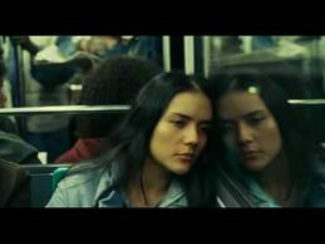 A young immigrant mother commutes across Paris for work. A young immigrant mother commutes across Paris for work. Tags: class, economic sociology, emotion/desire, gender, globalization, immigration/citizenship, inequality, organizations/occupations/work, care deficit, motherhood, subtitles/CC, 00 to 05 mins Year: 2006 Length: 4:50 Access: YouTube Summary: The anthology film Paris, je t'aime (2006) features 18 short films set in different neighborhoods—or, "arrondissements"—across Paris. The fifth segment, entitled Loin du 16e (which translates into "Far from the 16th"), takes place in the 16th arrondissement; it was written and directed by Walter Salles and Daniela Thomas, and stars Catalina Sandino Moreno. The film tells the story of a young immigrant mother who leaves her baby in daycare so she can travel far across town to care for the baby of her wealthy employer; she sings the same Spanish lullaby ("Qué Linda Manita") to stop both babies from crying. Despite being short in length and dialogue, the film offers multiple avenues of inquiry for teaching about many core sociological concepts, including gender, motherhood, immigration, class, globalization, and transnational labor markets. In their edited anthology Global Woman: Nannies, Maids, and Sex Workers in the New Economy, Barbara Ehrenreich and Arlie Hochschild highlight the various dimensions—both positive and negative—of immigrant women's entry into "First World" labor markets, which include immigrant women's ability to send money back to home countries, First World women's ability to pursue upwardly mobile paid careers, and emotional hardships and physical strains associated with leaving family and loved ones behind. Ehrenreich and Hochschild argue that this transnational economic process results in a care deficit, in which transnational women's labor supplies much needed care in rich countries, at the expense of creating a deficit of care in home countries. Instructors can focus on the following features of the film to facilitate discussion and analysis: (1) The significance of distance and space. What are the different environments the woman must travel through for her commute to work? Have students read about the 16th arrondissement and then ask: What is the meaning of the film's title, "Far from the 16th"? (2) The significance of power relations. What do we know about the relationship between the woman and her employer (whose face we never see)? What is the significance of the employer's request that the woman work late? Should the woman receive overtime pay for this extra work? Do you think she'll receive it? Why or why not? (3) The significance of the lullaby. Although she sings the same lullaby with the same purpose (to calm a crying baby), how do the two scenes differ? Focus on the environment in which the lullaby is sung, the recipient of the lullaby, the woman's relationship to each of these recipients, and how these factors shape the emotions attached to the lullaby. To view Loin du 16e in French, click here; to view it with Spanish subtitles, click here. For another clip that examines social inequality by interrogating ideas about distance, space, and lullaby, click here. Submitted By: Valerie Chepp 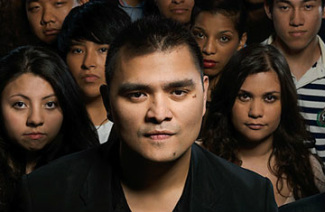 Jose Antonio Vargas talks about immigration reform Jose Antonio Vargas talks about immigration reform Tags: community, discourse/language, immigration/citizenship, marriage/family, assimilation, intermarriage, spatial concentration, 11 to 20 mins Year: 2013 Length: 18:56 Access: The Washington Post (Part 1 - Part 4) Summary: At a post office, I recently overheard a Ghanaian child translate the prices for his parents. This was all happening while the Chinese cashier repeatedly yelled out that they needed to pay extra for something or other. The little kid struggled to string together phrases in English, and both the parents and employees seemed relieved when the whole ordeal was over, somehow vaguely proud of the child’s budding communication skills. I see so much of my childhood in that Ghanaian family. Doing the language limbo hits close to home for me, having grown up first generation Latino in California. Translating menu options for my parents and answering the phone when they didn’t recognize the number on our caller ID became standard protocol. Weaving in and out of English and maneuvering through this dizzying dialectical maze is something I still encounter today; and I know I am not alone. In June of this year the US Senate passed an immigration reform bill that promises to provide a pathway to citizenship for the estimated 11 million undocumented immigrants living and working in the U.S. The bill's passage also brings up questions of assimilation, which refers to the process of immigrants adapting to their new society. Contrary to an opinion held by many, it is possible to quantify how well immigrants make the transition to their new homes. For instance, sociologists sometimes measure spatial concentration, or the degree to which immigrants live apart from the native-born population. Sociologists also look at the degree to which immigrants socially integrate with native-born folks, irrespective of geographic distance. One way to do this is by examining rates of intermarriage between immigrants and natives. Another way is to examine the degree to which immigrants have access to natives or naturalized citizens. Drawing from The New Immigrant Survey (2003), sociologist Guillermina Jasso and her colleagues recently reported that 72% of immigrants in the United States with legal permanent resident status have ready access to natives or naturalized citizens of the United States. Thinking again about the Ghanian child, one of course can also look at language as a measure of assimilation, but it's important to keep in mind that language is a two-way street. To foster a sense of community, some have argued we must press for assimilation by demanding that new immigrants speak English. What is often lost in these discussions is that native English-speaking Americans can also foster a strong sense of community by embracing the rich immigrant history of the United States and learning a second or third language. It is useful to consider assimilation and the ability of Americans to build community in light of the turbulent history of formal immigration policy. This four-part series from The Washington Post provides a nice discussion of the past 30 years of policy changes. Submitted By: Sal Ramirez 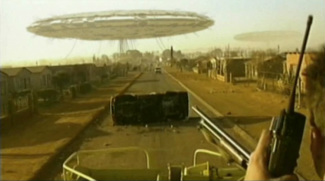 "Alive in Joburg" depicts an alien encounter to explore prejudice "Alive in Joburg" depicts an alien encounter to explore prejudice Tags: crime/law/deviance, discourse/language, immigration/citizenship, prejudice/discrimination, race/ethnicity, science fiction, 06 to 10 mins Year: 2006 Length: 6:23 Access: YouTube Summary: One of the most important and poignant components in a discussion of immigration issues is necessarily the processes of othering that occur when the legal and social legitimacy of a particular immigrant group is called into question. Xenophobia, anxieties about assimilation or the lack thereof, beliefs that a group of immigrants are hopelessly different, assumptions about immigrants causing rising crime rates and an overall lower quality of life for their neighbors, and discursive aspects such as the use of the words "illegal" and "alien" all come into play. In this short science fiction film, Neill Blomkamp (director of the movie District 9, which was based on this same film) juxtaposes a story about extraterrestrial refugees in Johannesburg under the apartheid government with real interviews with Johannesburg residents about refugees from Zimbabwe. This film can be used to open a discussion about the deeper meanings and connotations of words like "alien" when applied to human beings. What are the fears that such words represent and reproduce? What images and ideas do these forms of discourse call up in people's minds? What are the practical consequences of immigration threat discourses? And what real-life equivalents can students think of in terms of immigrant groups defined by others by their race, ethnicity, religion, etc.? Submitted By: Sarah Wanenchak 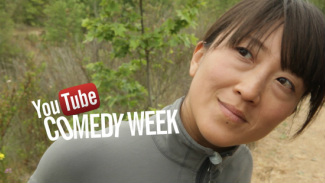 An Asian woman gets asked, "Where are you really from?" An Asian woman gets asked, "Where are you really from?" Tags: discourse/language, immigration/citizenship, inequality, nationalism, prejudice/discrimination, race/ethnicity, microaggression, perpetual foreigner syndrome, racism, substantive citizenship, white privilege, subtitles/CC, 00 to 05 mins Year: 2013 Length: 2:20 Access: YouTube Summary: In the U.S. people are often asked where they are from, but Asians, Latinos and other people of color often share the distinction of being confronted with a follow up question: "No, I mean where are you really from?" It is useful to examine what this common exchange reveals about how whites draw on race as a means of navigating and reasserting symbolic boundaries between insiders and outsiders, or between substantive citizens and non-citizens. This ridiculous scenario is humorously reenacted in the above comedy sketch, which features an Asian woman sharing a casual conversation with a white man. The man asks her where she is from, but after the woman explains she is from San Diego, the man becomes confused and attempts to clarify, "No, I mean, where are you really from?" His awkward questioning about the woman's "true" origin is a symptom of what law professor Frank H. Wu refers to as the "the perpetual foreigner syndrome." As Wu points out, when a person asks, "why aren't you married?" they are clearly signaling a measure of disapproval, and similarly, the question, "Where are you really from?" communicates something more than a curiosity about one's place of birth (see also, "My, you speak English so well!"). The question constitutes an effort to catalog a person on the basis of a perceived racial difference, but the effect of asking the question is exclusion, and as such, it can be understood as a microaggression, a term that refers to the “brief and commonplace daily verbal, behavioral, or environmental indignities, whether intentional or unintentional, that communicate hostile, derogatory, or negative racial slights and insults toward people of color” (Sue, et. al. 2007). The comedy sketch also serves as a means of broaching an important discussion about how this type of symbolic exclusion is part and parcel of a much broader historical pattern. To name just one particularly vulgar example, during the Second World War, Japanese Americans living on the U.S. West Coast were forced from their homes and relocated to concentration camps. Irrespective of whether they immigrated or were born in the United States, high ranking military officials and state representatives joined media columnists in amplifying the viewpoint that Japanese Americans were perpetual foreigners who could not be trusted. Despite living in the United States their entire lives, many assumed Japanese Americans were not really Americans. Submitted By: Lester Andrist 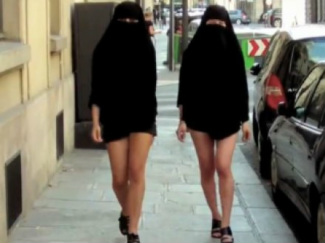 The NiqaBitch video protests France's burqa ban The NiqaBitch video protests France's burqa ban Tags: art/music, bodies, crime/law/deviance, gender, immigration/citizenship, inequality, prejudice/discrimination, race/ethnicity, religion, sex/sexuality, burqa, burqa ban, chandra talpade mohanty, femininity, feminism, male gaze, niqa, postcolonialism, racism, 00 to 05 mins Year: 2010 Length: 2:17 Access: YouTube Summary: This clip features a protest against France's recent Burqa ban, which went into force in 2011. The new law stipulates that anyone caught wearing the niqab or burqa in public could face a fine of €150, or be forced to take lessons in French citizenship. The performance of the two women in the video challenges the resistance/subordination binary, which typically frames discussions about what it means when non-Western women don the veil. By sexualizing their veiled bodies, the women challenge ideas about whether wearing a veil is necessarily an expression of women's oppression, just as it challenges whether wearing hot pants and high heels is necessarily an expression of women's ability to resist oppression (Note that the ban went into force after the video was made). Moreover, by performing a sexualized femininity they are apparently able to navigate the streets of Paris without being disciplined, and their short walk raises a number of provocative questions. First, to what extent are the two women able to “break” the law because they have garnered the approval of the heterosexual male gaze? How might people react to these women if they did not fit the archetype of attractive females? This clip provides an excellent window into Chandra Mohanty's acclaimed paper “Under Western Eyes.” Mohanty takes issue with the way that Western feminists assume that wearing the veil is a symbol of oppression and fail to give a voice to the women who wear these clothes. It is unfair for Westerners to assume that the way they themselves dress is a symbol of empowerment without unpacking the systems of patriarchy that inform Western modes of dress. Viewers can also consider whether Westerners have the authority to make judgments about the way non-Westerners dress. Does the government have the right to create laws that ban certain styles of dress? If so, why aren't the religious symbol laws enforced for nuns who wear veils? Submitted By: Pat Louie 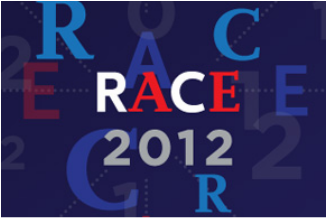 Race 2012 Tags: demography/population, immigration/citizenship, politics/election/voting, race/ethnicity, bifurcated racial hierarchy, post-racial America, white privilege, subtitles/CC, 21 to 60 mins Year: 2012 Length: 56:16 Access: YouTube Summary: This PBS documentary uses a political frame to discuss race and politics in America, taking advantage of the political significance of the election of President Barack Obama to set the background for a discussion on the history and politics of race in the United States. Race 2012 uses a nice blend of known academic scholars in political science and sociology, authors, activists, and political figures to provide a narrative on race in America today. The film provides perspectives on questions such as: 1) How do we define a racist or racism? 2) What does a changing minority demographic and a decreasing white demographic mean for America? 3) How do political parties tailor their political platform around an implicit racial narrative? and 4) How are non-Black minorities racialized and positioned within a bifurcated white/black racial hierarchy? Other important themes include contrasting early 20th century discourses around government assistance, which were framed as “nation building” policies and largely benefited whites, with current discourses around government assistance (or “welfare”) which are framed as “handouts” and are believed to largely benefit minorities, despite many whites also receiving these entitlements. The relevance of race in the construction of both a Republican and Democratic party identity is discussed in light of the changing racial demographic in America and persistent explicit and implicit anti-minority sentiments. This documentary would be a nice addition to broad discussions of race in the classroom as it provides both a historical and contemporary perspective on race. It also illustrates the ways that seemingly “race neutral” policies get coded with racialized meanings, and how these racial codes benefit and stigmatize racial groups differently. The documentary can also be useful for more specific discussions on race, demographic shifts, and political narratives, and the implications of these shifting demographics on the future of U.S. electoral politics. Submitted By: Shanna Brewton-Tiayon, Doctoral Student, University of Maryland 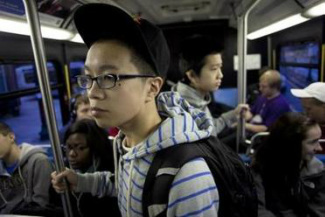 Johnny and George look for a piece of the "American Dream." Tags: children/youth, class, economic sociology, immigration/citizenship, inequality, rural/urban, american dream, class mobility, inner-city, poverty, 06 to 10 mins Year: 2011 Length: 7:23 Access: YouTube Summary: This video from The Boston Globe tells the story of two young brothers trying to overcome difficult barriers to achieve the "American Dream" (read associated article here). Johnny and George live in Dorchester, MA, a Boston crime and poverty "hot spot." In addition to their economic issues, they face many family challenges (e.g. their father committed suicide 3 years ago, and their mother has a disability preventing her from working outside of the home). As the older brother notes, the most challenging thing is probably "living every day without our dad and with a single parent, who can barely afford to give us any of the resources we need." But while people in such neighborhoods are often depicted as being hopeless, Johnny and George are very hopeful and seek a better life. They work hard to achieve grades at the top of their classes, earn their own spending money through tutoring, and have received help from a local mentor and non-profit organizations. Viewers might reflect on how Johnny and George's story reflects the "pull yourself up by your bootstraps" ideology of the American, but that everyone needs help to do so. Despite their challenges, they see themselves as more fortunate than many others. How does the class structure shape an individual's ability to live a successful life, and what types of social and economic resources are necessary to help those less fortunate in attaining it? What is the effect of this ideology on society? Given that the boys are Vietnamese, viewers should also be cautioned away from explaining their situation with the "model minority" myth, which obscures the struggles of many impoverished Asian immigrants. Viewers may also be interested in this documentary on social class, the challenges of living on minimum wage, and George Carlin's critique of the American Dream. Image by Yoon S. Byun/Boston Globe Submitted By: Cathryn Brubaker, PhD |
Tags
All
.
Got any videos?
Are you finding useful videos for your classes? Do you have good videos you use in your own classes? Please consider submitting your videos here and helping us build our database!
|
 RSS Feed
RSS Feed
